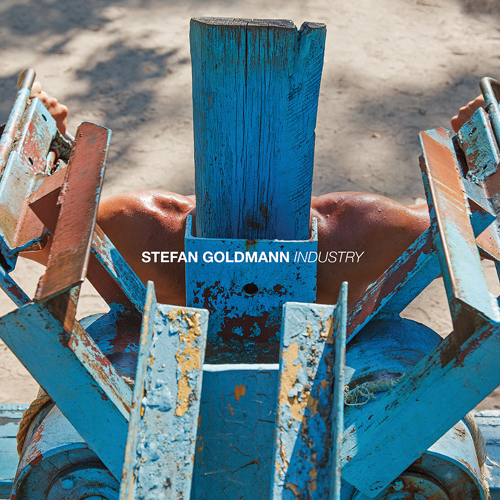Presets are pre-programmed and electronically, magneto-electrically or mechanically saved settings of a device such as a synthesizer or an effects unit: factory stock sounds, equivalent to stock photography or preset styles and filters in apps like Instagram. Audio presets provide a library of “typical” and supposedly desirable sounds – thus enabling a consumer to bypass individual programming and get results quickly. Each modern instrument or software comes with presets, and people use them heavily.
book:

For his first book, PRESETS – digital shortcuts to sound, Stefan Goldmann has talked to industry leaders, programmers, producers, musicians and fine artists for a comprehensive description of preset audio: from synthesis to sample libraries, from instrument emulations and gear-cloning to automated composition and performance – short cuts in electronic music, classical and traditional musics, guitar rock & audio-related visual arts are covered. Disruptive gear and iconic presets, their background and impact – from Korg’s M1, Yamaha’s DX7 and Roland’s 909 to Ableton Live, Native Instruments’s Reaktor, Sidechain compression and Auto-Tune – are discussed in unprecedented depth and clarity, with several persons in charge of such developments speaking out for the first time.
Featuring an introductory essay by Stefan Goldmann + extensive interviews with:
Robert Henke (Ableton / Monolake)
Mike Daliot (Native Instruments)
Michael Wagener (producer – Metallica, Janet Jackson, Ozzy Ozbourne)
Cory Arcangel (artist)
the original Korg M1 developer team: Tomoko Itoh / Junichi Ikeuchi
Dinis Schemann (pianist)
Tony Stevanovski (arranger)
and traditional Bulgarian musician Dimitar Kotev.
The book is currently available in its fourth edition (black cover).
Industry sheds all personalised effort and tests how far one can get by employing presets – and nothing but presets. All sounds are obscure factory presets from three now obsolete 1990s Japanese workstation synths, all effects are presets, all notes are quantized and most panning is purely accidental (laid out in the presets themselves). ‘Industry’ doesn’t rely on successful presets but on failed sounds – industrial assumption of where culture will go, but chose not to. The result is a surprisingly pleasant listening experience with effortless grooves and rich textures, and mildly demonic connotations of conveyor belts experiencing mood swings. As beautiful as the scheduled meeting of a pvc sheet and a thermoform mould on a workbench. 0% sound design.

Macro M40 lp, cd + midi 3.5″ floppy disk
Stefan Goldmann’s lectures & artists talks on presets:
Universität der Künste Berlin’s Techno Studies symposium
Folkwang Universität der Künste Essen, Germany
Hochschule der Künste, Bern, Switzerland
Siestes Electroniques, Toulouse, France
Goethe Institut in Kyoto, Osaka, Sofia, Plovdiv and Veliko Tyrnovo
Unlock Artlab, Buenos Aires
Groove (DE): #4 readers poll, best books 2015.
Textura (CDA): “There are times when I can’t help but think of Stefan Goldmann as some modern-day reincarnation of Marcel Duchamp or Andy Warhol. Like them, Goldmann flouts expectations and challenges conventions, and does so with no small amount of audacity and humour. The Berlin artist’s latest project explores how effective a music production can be when factory presets only are used, in this case presets from three outmoded devices, specifically Japanese workstation synthesizers: the Technics WSA1R (1995), Korg Triton Rack (2000), and Yamaha TG33 (1989). […]
Adding to the project’s perverse appeal is the fact that, despite being equipped with sounds aimed at electronic music production, the three workstation synths didn’t make significant inroads into techno and house, or anything other electronic music style for that matter. Industry doesn’t, therefore, feature successful presets but instead “failed sounds of now obsolete synths,” as wryly noted in the press release. Yet while that might generally be true, a great many of the recording’s sounds call to mind the ’80s and ’90s and low-grade music production for movies and TV shows of the time. The slamming snare and vocoder-like effects featured in “Aurelola,” for instance, embody an entire era all by themselves. With the presets constraint in place, Industry‘s music naturally sounds cheesy in places, yet Goldmann, not surprisingly, transcends the self-imposed technical limitations through the force of his composing sensibility and imagination. At the same moment you’re wincing over the crude drum sounds, you’re also grooving to the funk pattern Goldmann has created with them.”
Frieze Magazine (DE) “In art, works made using unaltered found objects are referred to as ‘readymades.’ In music, the terms ‘cover’ and ‘sample’ are used when artists borrow from others. But working with presets – the sounds and patterns preinstalled in music production software – tends to be seldom discussed. Presets – Digital Shortcuts to Sound – for which Goldmann spoke to heavy metal producer Michael Wagener, techno producer Robert Henke and artist Cory Arcangel, among others – aims to change this. […] Goldmann’s position is non-dogmatic, pointing out that human judgement is easily overstretched and relies on having points of reference. Consequently, he argues, the notion that one might be able to process an artistic work that is ‘new’ in every way, totally free of presets, is erroneous. According to Goldmann, every work of art is made on the basis of a “cultural consensus that creativity is applied to a specific set of parameters only, while others are taken for granted.” He refers to these other, usually unconscious parameters as “presets of the mind.” [Such as employing specific instruments, metres, tempos, tuning systems, performance settings etc.] In other words: a picture hangs in a frame, a violin comes with four strings and an EDM track needs [Native Instruments VST synthesizer] Massive killer bass.
Wire Magazine (UK) “Industry is so conceptually seemless it was perhaps superfluous for Stefan Goldmann to even record it. Every sound on the album is a preset from now obsolete synthesisers; given that the technological form itself has been abandoned for soft synth on the one hand and analogue fetish on the other, they represent the fossil unconscious of the music industry’s recent past. Goldmann’s concept can be viewed most generously as a kind of Oulipian restraint, but it’s only the second half that he begins to exploit the possibilities of this narrow language.”